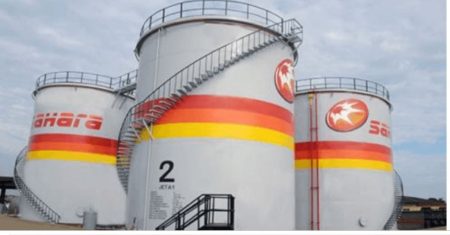Paragraph 1: OPEC Adjusts Oil Demand Forecast Amidst Trade Uncertainties
The Organization of the Petroleum Exporting Countries (OPEC) has marginally lowered its projection for oil demand growth in 2025, attributing the revision to the lingering effects of US trade tariffs on the global economy. The cartel now anticipates demand to expand by 1.3 million barrels per day (bpd), a slight decrease from its previous forecast of 1.4 million bpd. This adjustment reflects growing concerns about the potential impact of trade disputes on economic activity and, consequently, oil consumption. The downward revision comes as the price of OPEC’s basket of twelve crudes experienced a decline, reaching $66.25 per barrel, compared to $70.85 the previous week.
Paragraph 2: Trade Tensions and Increased Output Weigh on Oil Prices
US President Donald Trump’s trade policies, including tariffs imposed on various countries, have contributed to downward pressure on oil prices. These protectionist measures have fueled trade tensions and sparked uncertainty in the global economic outlook. Simultaneously, plans for higher oil production by OPEC+, a coalition comprising OPEC members and allied nations such as Russia, have further exerted downward pressure on prices. The combined effect of trade disputes and increased oil supply has raised concerns about the trajectory of economic growth and its implications for oil demand. Specifically, tariffs imposed on Nigerian businesses, though temporarily suspended, exemplify the disruptive potential of trade wars on international commerce.
Paragraph 3: OPEC Lowers Economic Growth Projections Reflecting Trade Concerns
In response to the escalating trade tensions, OPEC has revised its global economic growth forecast downwards. The organization now projects global economic expansion of 3.0% for the current year, down from its earlier estimate of 3.1%. The forecast for the following year has also been reduced to 3.1% from 3.2%. These revisions reflect OPEC’s acknowledgment of the heightened uncertainty surrounding the global economic outlook due to trade-related dynamics. While OPEC had previously maintained its growth forecasts, noting that the global economy would likely adjust to trade concerns, the persistence and intensification of trade disputes have prompted a reassessment of the economic landscape.
Paragraph 4: Oil Market Dynamics and OPEC’s Long-Term Demand Outlook
Despite the downward revision in short-term demand growth, OPEC’s overall oil demand outlook remains relatively optimistic compared to other industry forecasts. The organization expects oil consumption to continue rising in the coming years, contrasting with the International Energy Agency’s (IEA) prediction of peak oil demand within this decade due to the global transition to cleaner fuels. While oil prices experienced a temporary uptick following the release of OPEC’s report, largely due to US exclusions on some tariffs, they have still declined significantly over the month. The IEA is expected to update its oil demand forecasts, providing further insights into the evolving dynamics of the global energy market.
Paragraph 5: OPEC+ Production Adjustments and Compliance Challenges
OPEC+’s crude oil production decreased in March, primarily driven by output reductions from Nigeria and Iraq. This decline occurred amidst the group’s plan to increase production in the subsequent months as part of a strategy to gradually unwind previous output cuts implemented to stabilize the market. However, the implementation of this plan faces challenges due to the non-compliance of some members, notably Kazakhstan, which has consistently exceeded its assigned production quota. Despite commitments to adhere to the agreed-upon targets, Kazakhstan’s overproduction highlights the difficulties in maintaining cohesion within the OPEC+ alliance.
Paragraph 6: OPEC+ Meeting and Future Production Decisions
Eight key OPEC+ members, including major producers like Saudi Arabia, Russia, and Iraq, held a virtual meeting to assess global market conditions and discuss future production strategies. These countries agreed to implement a combined production adjustment in May, effectively accelerating their previously planned output increases. This decision aims to provide participating countries with an opportunity to accelerate their compensation for earlier production cuts. However, the group acknowledged that these gradual increases could be paused or reversed depending on the evolving market dynamics. A further meeting is scheduled for May to determine production levels for June, reflecting the ongoing need for adjustments in response to the volatile global oil market.














